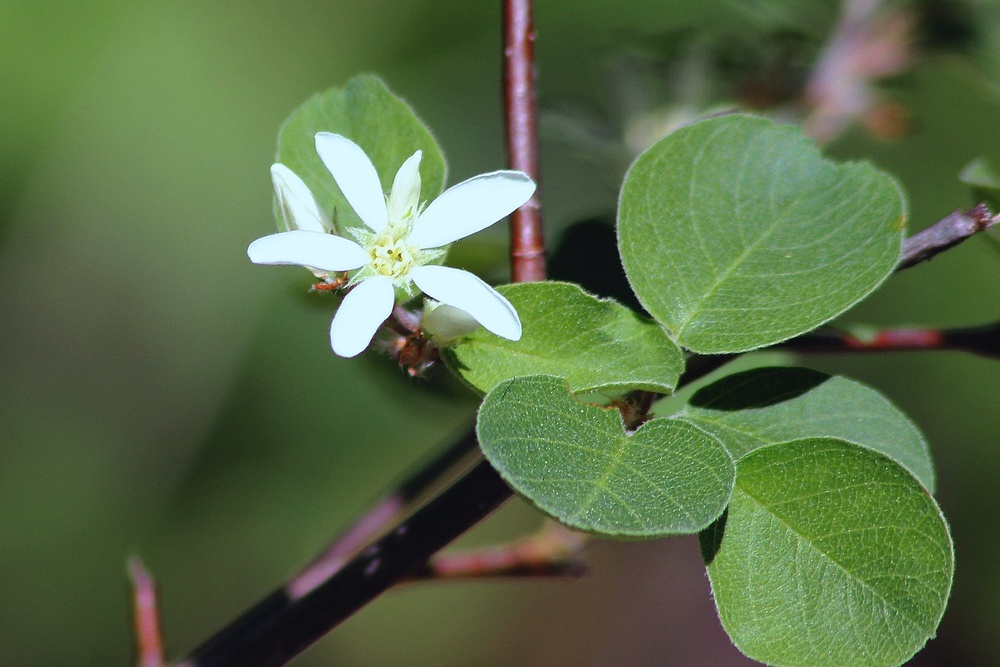Amelanchier alnifolia
Krenteboompje, Saskatoon / Saskatoon, Serviceberry
Rosaceae (Rozenfamilie)Northern America (whole)

Edible plant part (1)
Fruits
Read 'form of consumption' for safe preparation methods
Toxic plant part (1)
Leaves
Saskatoon, Serviceberry belongs to the small shrubs in the food forest. In the process of ecological succession it is a mid species. The growth rate is medium. After 2 to 5 years this species is fully grownand has an average height of 3.5 to 6 meter. and a width of 2 to 3.5 meter.
The foliage (or leaf cover) is dense. It loses its leaves in september.
This species forms a fibrous medium deep root system. This species is non spreading in the food forest. Saskatoon, Serviceberry is no nitrogen fixer.
 foto: David A. Hofmann, https://www.flickr.com/photos/23326361@N04/5728252049/in/photostream/
foto: David A. Hofmann, https://www.flickr.com/photos/23326361@N04/5728252049/in/photostream/
 foto: David A. Hofmann, https://www.flickr.com/photos/23326361@N04/5728252049/in/photostream/
foto: David A. Hofmann, https://www.flickr.com/photos/23326361@N04/5728252049/in/photostream/
 foto: F.D.Richards, https://www.flickr.com/photos/50697352@N00/47799509011
foto: F.D.Richards, https://www.flickr.com/photos/50697352@N00/47799509011
Growth factors
- Frost (whole plant)
-
very strong frostcold frostmild frostlight frostno frost
- Frost (flowers)
-
very strong frostcold frostmild frostlight frostno frost
- Light
-
full sunlight shadehalf shadefairly deep shadedeep shade
- Wind
-
strong sea windstrong windsome windshelteredvery sheltered
- Soil texture
-
sandloamlight clayheavy claypeat
- Soil moisture
-
inundationwetmoistdrydrought
- Groundwater level
-
very lowlowmediumhighvery high
- Soil acidity
-
very acidacidneutralalkalinevery alkaline
- Soil fertility
-
very richrichaveragepoorvery poor
Flowering and pollination
- Flowering period (peak)
- mid march, end of march
- Flowering period (length)
- several weeks
- Pollination vector
- insects
- Plant reproductive fertility
- self sterile, self-fertile (sf)
Life Span and Plant Health
Disease susceptibility
resistantMain serious pests and diseases
birds, spotted wing drosophilaHarvest and Consumption
Fruits
- Harvest location edible part
- Above reach, elbow height, high, but within reach
- Harvesting period - start
- Early june, mid june, end of june
- Harvesting period - length
- Month, several weeks
- Harvesting period - uniformity
- Low
- Suitable harvesting methods
- Hand
- Size edible parts
- Small
- Form of consumption
- Fresh, processed
- Natural storability
- Week
- Suitable markets
- Niche
- Productive life span - start (year) - minimum
- 4
- Productive life span - peak (year) - minimum
- 20









































